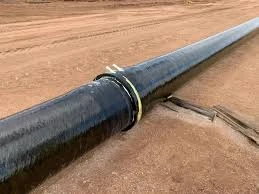
-
 Afrikaans
Afrikaans -
 Albanian
Albanian -
 Amharic
Amharic -
 Arabic
Arabic -
 Armenian
Armenian -
 Azerbaijani
Azerbaijani -
 Basque
Basque -
 Belarusian
Belarusian -
 Bengali
Bengali -
 Bosnian
Bosnian -
 Bulgarian
Bulgarian -
 Catalan
Catalan -
 Cebuano
Cebuano -
 China
China -
 China (Taiwan)
China (Taiwan) -
 Corsican
Corsican -
 Croatian
Croatian -
 Czech
Czech -
 Danish
Danish -
 Dutch
Dutch -
 English
English -
 Esperanto
Esperanto -
 Estonian
Estonian -
 Finnish
Finnish -
 French
French -
 Frisian
Frisian -
 Galician
Galician -
 Georgian
Georgian -
 German
German -
 Greek
Greek -
 Gujarati
Gujarati -
 Haitian Creole
Haitian Creole -
 hausa
hausa -
 hawaiian
hawaiian -
 Hebrew
Hebrew -
 Hindi
Hindi -
 Miao
Miao -
 Hungarian
Hungarian -
 Icelandic
Icelandic -
 igbo
igbo -
 Indonesian
Indonesian -
 irish
irish -
 Italian
Italian -
 Japanese
Japanese -
 Javanese
Javanese -
 Kannada
Kannada -
 kazakh
kazakh -
 Khmer
Khmer -
 Rwandese
Rwandese -
 Korean
Korean -
 Kurdish
Kurdish -
 Kyrgyz
Kyrgyz -
 Lao
Lao -
 Latin
Latin -
 Latvian
Latvian -
 Lithuanian
Lithuanian -
 Luxembourgish
Luxembourgish -
 Macedonian
Macedonian -
 Malgashi
Malgashi -
 Malay
Malay -
 Malayalam
Malayalam -
 Maltese
Maltese -
 Maori
Maori -
 Marathi
Marathi -
 Mongolian
Mongolian -
 Myanmar
Myanmar -
 Nepali
Nepali -
 Norwegian
Norwegian -
 Norwegian
Norwegian -
 Occitan
Occitan -
 Pashto
Pashto -
 Persian
Persian -
 Polish
Polish -
 Portuguese
Portuguese -
 Punjabi
Punjabi -
 Romanian
Romanian -
 Russian
Russian -
 Samoan
Samoan -
 Scottish Gaelic
Scottish Gaelic -
 Serbian
Serbian -
 Sesotho
Sesotho -
 Shona
Shona -
 Sindhi
Sindhi -
 Sinhala
Sinhala -
 Slovak
Slovak -
 Slovenian
Slovenian -
 Somali
Somali -
 Spanish
Spanish -
 Sundanese
Sundanese -
 Swahili
Swahili -
 Swedish
Swedish -
 Tagalog
Tagalog -
 Tajik
Tajik -
 Tamil
Tamil -
 Tatar
Tatar -
 Telugu
Telugu -
 Thai
Thai -
 Turkish
Turkish -
 Turkmen
Turkmen -
 Ukrainian
Ukrainian -
 Urdu
Urdu -
 Uighur
Uighur -
 Uzbek
Uzbek -
 Vietnamese
Vietnamese -
 Welsh
Welsh -
 Bantu
Bantu -
 Yiddish
Yiddish -
 Yoruba
Yoruba -
 Zulu
Zulu
grp pipe
The Significance of GRP Pipes in Modern Infrastructure
In the realm of modern infrastructure, the importance of selecting appropriate materials for construction cannot be overstated. Among the various options available, Glass Reinforced Plastic (GRP) pipes have emerged as a preferred choice for a multitude of applications. Known for their exceptional strength-to-weight ratio and durability, GRP pipes are increasingly being utilized in various sectors, including water supply, sewage systems, and industrial processes.
.
Another critical aspect of GRP pipes is their lightweight nature. Weighing considerably less than steel or concrete alternatives, GRP pipes are easier to handle, transport, and install. This characteristic can lead to reduced labor costs and shorter installation times, ultimately accelerating project timelines. Additionally, the lightweight design minimizes the need for heavy machinery, further cutting down on equipment costs and potential environmental disruption during installation.
grp pipe

GRP pipes also exhibit excellent thermal insulation properties. This feature is particularly beneficial in applications where temperature control is vital, such as in the transport of hot or cold liquids. The insulation helps maintain the desired temperature of the fluids within the pipes, ensuring efficiency and reducing energy costs.
Moreover, GRP technology allows for the customization of pipe designs to suit specific needs. Pipes can be manufactured in various diameters, lengths, and configurations, making them versatile for different applications and terrains. This adaptability makes GRP pipes suitable for projects ranging from small-scale residential plumbing to large-scale industrial systems.
As environmental concerns continue to rise, the sustainability aspect of GRP pipes is noteworthy. The materials used in the production of GRP are often recyclable, contributing to a circular economy. By opting for GRP, companies and municipalities can align their infrastructure projects with green initiatives, promoting an eco-friendly approach to urban development.
In conclusion, GRP pipes represent a forward-thinking solution in the construction and infrastructure sectors. Their combination of durability, lightweight design, thermal insulation, and environmental sustainability makes them a superior choice for modern piping needs. As the industry evolves, the adoption of GRP technology is likely to increase, paving the way for more efficient and sustainable infrastructure solutions worldwide.
Latest news
-
Exploring the Benefits of Top Hammer Drifter Rods for Enhanced Drilling PerformanceNewsJun.10,2025
-
High-Precision Fiberglass Winding Machine for GRP/FRP Pipe Production – Reliable & Efficient SolutionsNewsJun.10,2025
-
FRP Pipes & Fittings for Shipbuilding - Corrosion-Resistant & LightweightNewsJun.09,2025
-
Premium FRP Flooring Solutions Durable & Slip-ResistantNewsJun.09,2025
-
Premium Fiberglass Rectangular Tanks Durable & Lightweight SolutionNewsJun.09,2025
-
Tapered Drill String Design Guide Durable Performance & UsesNewsJun.09,2025









